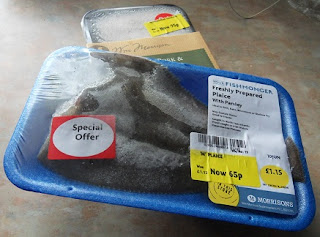In a previous post, I recommended that people who want to lose weight should eat eggs for breakfast rather than toast or cereal. Given the scare stories that were all over the media a while back, I can imagine the reaction in some reader's heads.
Aren't eggs high in cholesterol?
Won't they raise my cholesterol levels?
Won't they increase my risk of heart disease?
Well, the answers are yes, no, and no, respectively.
In 1968 the American Heart Association recommended that
people with high cholesterol limit their intake of dietary cholesterol. The recommendation was later expanded to the
general population. This advice seems to
have been based on an unproven assumption that cholesterol in the food we eat
goes straight into our blood. The best
analogy I can think of is Meat is muscle tissue so it will go straight to your muscles. Eating a lot of meat will make you look like a body
builder - no exercise or weight lifting necessary. Our
internal food processing systems just aren't that simple.
Cholesterol gets a bad rap, but it is actually fundamental to
our existence. Every cell in the human
body requires cholesterol to form its protective waterproof membrane. Cholesterol is also needed for the production
of vitamin D and the sex hormones oestrogen and testosterone. The brain has a higher concentration of
cholesterol than any other organ.
Studies have found links between low cholesterol levels and the
incidence of strokes, brain haemorrhages, dementia and depression.
The vast majority of cholesterol
in our bodies is manufactured internally.
Cells can produce their own cholesterol or import it from the
bloodstream. About 75% of cholesterol in the body is made by the liver. In normal, healthy people, the liver balances
its cholesterol production. It can
manufacture around 1000 mg a day. If it
takes in extra cholesterol from food sources, it simply makes less.
Research into human eating habits has been unable to demonstrate a relationship
between high cholesterol foods such as eggs and dairy products and a harmful
increase in serum cholesterol levels. One
US study examined the diets of 957 men and 1,082 women in the town of Tecumseh , Michigan
Analysis showed that the men and women with the highest serum
cholesterol did not eat significantly more fat or cholesterol in their diets
than the participants with the lowest serum cholesterol. In fact, the study did not reveal any dietary
factors that could account for the difference.
Another study specifically set out to assess the nutritional
significance of eggs in the American diet and to determine the degree of
association between egg consumption and serum cholesterol. The researchers analyzed data from 27,378 participants in a national health and
nutritional survey. They found
that
Contrary to what might be expected, total serum cholesterol concentration was negatively related to frequency of egg consumption. Subjects who reported eating four or more eggs per week had a significantly lower mean serum cholesterol concentration than those who reported eating one or fewer eggs per week.
Results of our study indicate that eggs make important nutritional contributions to the American diet, and frequent egg consumption does not associate adversely with serum cholesterol concentrations. Our work repudiates the hypothesis that increased egg consumption leads to increased serum cholesterol concentrations and also adds to the growing body of literature which supports the nutritional benefits of eggs.
Back in 1991, a news story was widely circulated about an 88-year-old man living in a retirement home who
had consumed an average of 25 soft boiled eggs a day for over 15 years. He
maintained normal levels of blood cholesterol.
When asked to comment on the case, a clinical dietician said that the man's healthy cholesterol level
was not surprising. "All of the studies we have done showed no effect of
high egg consumption in a normal diet."
So go ahead and
enjoy the nutritional benefits of an egg breakfast as often as you
like. Serve omlettes,
frittatas, soufflés and quiches for lunch and dinner too. Eggs really are good food cheap.


















